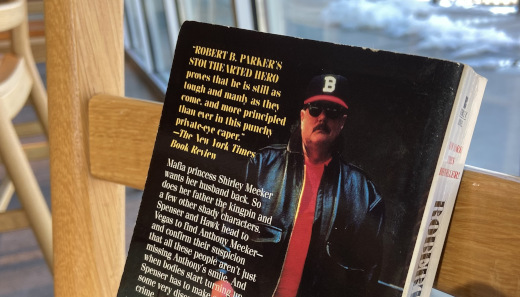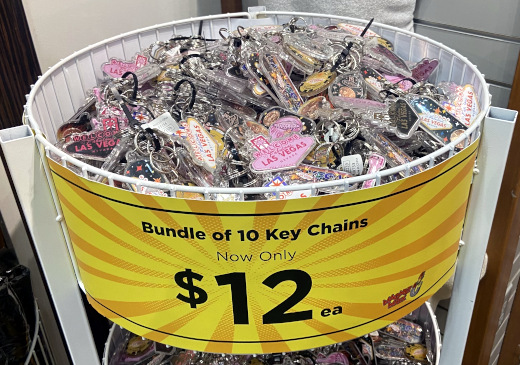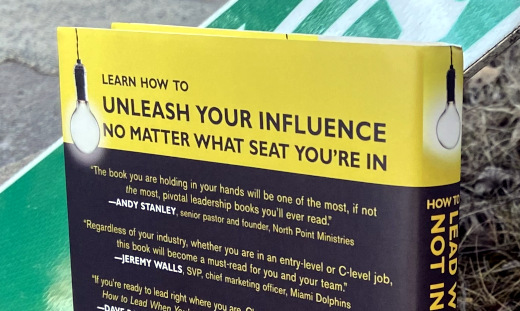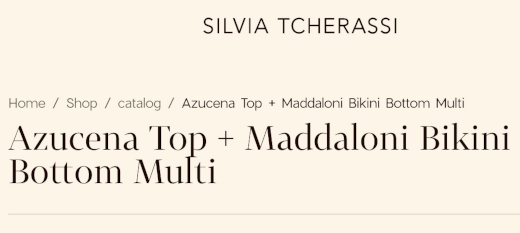My Takeaways From Chance By Robert B. Parker

A favorite TV show from the 1980s that I’ve recently rediscovered in streaming reruns is Spenser: For Hire. The series is based on novels by Robert B. Parker which are set in his hometown of Boston. As I’m having fond memories rewatching these episodes almost 30 years later, I realize that I never actually read any of the books that inspired the TV show.
That fact changed recently when, at a local thrift store, I saw one of Parker’s pulp fiction novels sticking out from a bookshelf; with its casino-themed cover catching my eye, I picked up this copy of Chance. It is the story of Spenser and his frequent collaborator Hawk as they get tangled with the Boston mob by helping a mob princess find her husband who abruptly disappeared. This page-turner navigates both the mean streets of greater Boston area and Las Vegas.
In addition to my long-standing need to read more books like this, I had other takeaways from reading Chance.
A wicked accurate portrayal of Boston – As Parker lived in Boston as he wrote his novels, the level of detail to his stories on Boston and other surrounding communities is intense. One example in particular that struck me was of the former Ambrosia restaurant which was in the office building in Boston’s Back Bay where I worked for a few years. Though I never actually ate there, I walked by it almost daily and as I’m reading in the story, I can picture in my mind’s eye exactly what the restaurant looked like. There are other portrayals of the city and levels of detail that editors of other authors would likely strike from any other book as unnecessary.
Seeing the story as I’m reading it – In addition to the buildings and scenery, I also can see the characters of Spenser as actor Robert Urich who played him in the series, as well as Hawk as portrayed by Avery Brooks. In the descriptions of the other characters and their dialogue, Boston accents are leaping off the page.
Narration over dialogue – Much of the story being told in Chance is narration by Spenser himself. Most of the dialogue is short sentences in statements spoken by people who know each other well and can almost predict what each other is going to say. The narration also carries the same subtle sarcasm that the TV show had as well, and it just all adds to a great story being told.
I really enjoy reading Chance and I hope to pick up other copies of Parker’s books and weave them in between a lot of the business and technical books I read and post about here at The Hot Iron. As for what I did with this copy of Chance, I left it at a local Starbucks where I writing these takeaways. Hopefully the serendipity from encountering this book will be appreciated.
This is from The Hot Iron, a journal on business and technology by Mike Maddaloni.
Did you enjoy this? Subscribe to The Hot Iron by RSS/XML feed or Read by Email
Book Take-Aways • (0) Comments • PermalinkVacation Experiences Over Souvenirs

It was like déjà vu all over again. I’m standing in a souvenir store on Fremont Street in downtown Las Vegas, encircled by a myriad of merchandise plastered with Las Vegas, casino names and other Southwest themes. As I gaze at what is before me, my eyes go in and out of focus in a TV show time-travely way. I say to myself, “self, I have been in this store before, exposed to the same stuff, just in another city… heck country.” Then I catch myself saying out loud, “I just don’t want any of this crap!”
At the end of the day all of this is stuff I don’t need in my life. I’d rather just spend my hard-earned money on something more meaningful in experiences. Needless to say I left the store empty-handed but full of confidence in my decision. The rest of the family, well, they picked up cheap t-shirts off the $5 rack which was ok with me, knowing the bulk of our money will be much better spent.
Anatomy of Souvenir Hell
There’s a myriad of definitions out there for the word “souvenir” and I’ll offer this one from Wikipedia that reads, “from French, a remembrance or memory, memento, keepsake, or token of remembrance, is an object a person acquires for the memories the owner associates with it.” With that… why tokenize the memory and just live the experience?
Souvenirs are nothing new; I remember them back in the day when we would stop on family trips throughout New England as a child. As we lived in said New England, despite our pleas acquiring such souvenirs was rarely if ever an option. Maple sugar candy, however, was usually allowed after some persistence, and this sweet treat is a memory – dare I say experience – that remains with me to this day.
Along the way souvenirs became Big Souvenirs with the onslaught of mega souvenir retailers, box-store size locations where upon entry you are overwhelmed at eye-level with racks of apparel, shelves of items and the high walls are plastered with said apparel and beach towels and other larger items. With all this sensory overload who wouldn’t want to acquire that sweatshirt from Myrtle Beach or those Christmas tree ornaments from Universal Studios?
Being In The Moment
Instead of these acquisitions I have opted to pay a little extra for a more enhanced experience. On that journey through Sin City this included better seats for Cirque du Soleil “O” (I still want to know how that pool works!) and upgrading our tour of the Hoover Dam to a pimped-out pink jeep rather than a staid motorcoach. We had a wicked better time as a result, plus a lot of great pictures and memories.
Regarding those pictures – and video – we have literally gigs of them backed-up, just waiting to be viewed again. For this member of Generation X, taking pictures in my youth was limited to the 27 exposures on the roll of still film, and as we didn’t have a Super 8 camera video memories simply don’t exist. With all of the pictures we take today, often they are just accumulated on various hard drives and online storage, but at least things can be done with them, like collage prints, captioning videos, photobooks (something I want to do) and merely talking about them.
Despite my expressed disdain, I have wandered off to the far corners of these shops and have succumbed to the purchase or two of discounted items. The Disney t-shirt I bought in December of 2019 that had that year accompanying the mouse’s shadow discounted to $9.99 was a decent find. Another purchase that serves a more functional role is “used” decks of cards from casinos, which you can get for around $5 each. Clearly a deck of cards is not used much as the cards are relatively pristine with the exception of the notches cut on 2 opposite corners so they never get used again on a gambling table. As we are a card-playing family (some more so than others) they serve a functional role, from an efficient time-killer to replacing cards that are destined to be lost.
As I finish this post, I scan my surroundings at the Starbucks serving as my writing studio and quickly see souvenir drinkware, from mugs emblazoned with stereotypical Dairyland iconography to the giant W representing the state’s major university’s sports teams. All of this reminds me of a quote from the comedy genius of Mel Brooks, and to paraphrase it, “merchandising, where the real money is made!”. Where that may be the case, the lure of souvenirs will remain for me something to actively manage throughout my own and my family’s journeys.
This is from The Hot Iron, a journal on business and technology by Mike Maddaloni.
Did you enjoy this? Subscribe to The Hot Iron by RSS/XML feed or Read by Email
Diversions • Strategize • (0) Comments • PermalinkMy Takeaways From How To Lead When You’re Not In Charge

Whenever I hear someone retell the saying, “find a job you love and you’ll never work a day in your life” I am always reminded of the phrase, “you can’t always get what you want but if you try sometime you’ll find you get what you need.” Where many of us would love to prefix the word “dream” with any mention of our employment, the latter words of those famous British philosophers remind us we may not be in the most ideal situation, but rather the best for us at the time, whether it’s dull, chaotic or even just ok.
Sometimes when we face the day we can feel we are at a loss, that we are merely succumbing to a situation we have no say in. Why we feel like this may vary, often it is the case when we don’t have the title of a leader, but are staff working under a structure. Or at least that’s how it appears, and there may be an opportunity to make the best of the situation for yourself.
That very scenario is the crux of the book How To Lead When You’re Not in Charge by Clay Scroggins. A Christian minister, he shares his leadership experiences, official and unofficial, in his work in ministry, which from the sound of it is no less political than any traditional office.
As someone who has held leadership positions from low to as high as you can go (yes, I will claim being president of a one-person company as the high end of this), I have worked in a number of situations where I have been a boss, yet I can’t say that I was a leader to the same degree in all of those situations. This is what prompted me to pickup a copy of this book when I recently learned about it. Where there were a number of small takeaways from this book, I’ll share my larger ones.
You don’t need authority to be a leader, but most feel they do – This is the overarching theme of the book. I have seen this first-hand in many situations. Where we may not have formal sign-off powers, there’s likely plenty of other things we can do to lead the team and/or project we work on.
Lead yourself well – You can lead yourself even when others don’t lead you. I’ll be honest, in all of my years I never thought about it like that. Sure, I have heard it many times that we choose to be happy or angry, and we have control of ourselves more than we think. But saying that we are leading ourselves, well that was new to me. Maybe instead of a Pomodoro timer, I should have an alarm that goes off every 20 minutes asking, “are you leading yourself well?”
Influence has always been, and will always be, the currency of leadership – This is the answer to my first takeaway about not having authority, but if you have influence, that can make all of the difference. Think about it – who among your team (immediate or extended) has influence but is not in a leadership position? It also talks to how you can cash in on a potential leadership role.
Most NFL QBs come from smaller colleges – When I first read this, my first thought of course was of Tom Brady who graduated from the University of Michigan, a school that is far from small. After doing some searches on the Interwebs, I found both plenty of examples of quarterbacks who went to small schools and whole articles about it. As someone who went to a dinky school, this would have been of more comfort to me soon after I graduated; now over a score and a half later, nobody cares where I matriculated.
As How to Lead When You’re Not in Charge was written by a Christian pastor, there are many Bible and religions references, which increase in density as the book progresses. I personally was fine with this, being the good Catholic boy that I am. I only state it as some people may be turned off by this. Over and above, this book is a quick read that is both light-hearted and to the point, as Scroggins weaves his sense of humor throughout it. It stands as a good reminder of what you already bring to the table in your job that you may not be aware of. The book also has a “lead me” plan – it wouldn’t be a self-help business book without a plan! I did not work through it as I was not seeking yet another plan to work on in my life.
If you are in a position where you feel like you’re not making a difference or being ignored, I recommend picking up a copy of this book. As for what I am doing with mine, I am sending it to a colleague, someone who appreciates a good business book as well as the religions references.
This is from The Hot Iron, a journal on business and technology by Mike Maddaloni.
Did you enjoy this? Subscribe to The Hot Iron by RSS/XML feed or Read by Email
Book Take-Aways • (0) Comments • PermalinkYour Name As A Brand

AI-generated image of people walking down the street wearing clothing with ME on it generated by ChatGPT
One of my neighbors back in Chicago shared his last name with that of a popular apparel brand. On occasion I would see him and his family wearing that brand of clothing, and I always thought that was wicked cool. I never lamented there is not a clothing line with my last name, nor did I go to the extent of visiting one of the myriad of customizable clothing Web sites out there and order something with “MADDALONI” blazoned on it. Buying existing clothes with your name, that’s ok. Ordering your own clothes with your name, that’s a little much, even for me.
My surname is far from mainstream, but it is not entirely uncommon. The etymology of the name is not surprisingly Italy, and there are communities that bare my surname. Where I personally have never met other Maddalonis who are not a relative, I have connected with some online. I got a LinkedIn connection once from a college student who, as a youth, when he would Google himself my name would always come up, so he thought he’d connect with me. Yes, there are others named Mike Maddaloni out there, including him and the retired Secret Service agent whose book I read and shared my takeaways from years ago.
The name Maddaloni applied to people, surely. But attached to products?
Finding Myself
A holdover from the days of when I was actively managing my personal brand is Google Alerts for my last name. This free service from the Big Tech giant will send you a daily email of any mention of any string, phrase, name, etc. that appears new in the annals of Google’s databases and models. I’ve kept it running, for every once in a while, some Web site appears with a mention of me in it. These days those are rare, and most often the links include an Italian DJ/producer and a Long Island, New York based jewelry store. They have also informed me of long-lost relatives who have died.
The other week I got a Google Alert with a link to my last name on something I wasn’t expecting: a ductless island range hood in stainless steel.
The link in the Google Alert was to the above-shown listing on Home Depot Canada’s Web site. Upon further searching I found other links for this device for sale including on what appears to be the manufacturer’s Web site where other products are named after what also appear to be names that sound Italian.
I was tempted to contact the maker of this appliance, however after a past experience of a similar inquiry I decided not to.
If you think a range hood is random, how about a bikini bottom?
As the father of daughters, the last thing I ever want to be thinking about is bikinis. But there it was, a bikini bottom with the same name as said daughters.
The link was to the Web site of Silvia Tcherassi, a Columbian fashion designer. Captivated by this, I reached out to the email addresses listed on the Web site of her US-based headquarters to ask why my last name was tied to such an itsy bitsy teenie weenie product, however I never got a response. Where the item is no longer available on her Web site, you can see the (un)fortunately sold-out swimwear on Saks Fifth Avenue’s Off 5th Web site.
Deconstructing Your Name as a Brand Name
Many desire to see their name in lights, and others do not. Even when you do, seeing it in or on something can evoke emotions from amusing to embarrassing. Although I may not be buying my eponymous range hood, not am I not sadden by the unavailability of these bikini bottoms, it’s intriguing to know they are out there. Google Alerts and similar Web searches can alert you to what to look for, or what to simply avoid. Do you have Google Alerts for yourself, or have you searched on your name lately? I welcome you to share your thoughts – with or without your name – in the comments of this post.
This is from The Hot Iron, a journal on business and technology by Mike Maddaloni.
Did you enjoy this? Subscribe to The Hot Iron by RSS/XML feed or Read by Email
Build • Business • Strategize • (0) Comments • PermalinkMy Takeaways From Everything You Need To Ace American History In One Big Fat Notebook

As a proud history geek, I am naturally drawn to events, places and texts about the past. Perhaps it has something to do with growing up in Massachusetts and living in close proximity to many historical sites, some within feet of each other, such as what I wrote about these monuments in the eastern town of Arlington.
When I came upon the book Everything You Need To Ace American History In One Big Fat Notebook when perusing books at a thrift store, I was intrigued. Could such a book live up to its title? Would my own middle-schooler agree? Would I agree? As it was marked at the reasonable price of US$1.99, it was worth the “risk” to find out.
Before passing it along to my kid, I decided to read it first myself to see if it would pass my said standards. As you may have guessed I had some takeaways from it too.
High level, yet not a gloss over – I was impressed with the approach of the book. It covered a wide spectrum of US history, including both positive and negative aspects, such as slavery. The book started in the early 1600’s, including stories of Native Americans, and went through 2016 and the election of Barack Obama.
Shays’ Rebellion covered – Prior to cracking the orange cover of the book, I said to myself, “Self, I will be disappointed if there’s no mention of Shays’ Rebellion. Fortunately that never happened. If you are not familiar with what historians consider the first revolt within the newly formed United States of America – which took place within a few miles from where I grew up – it’s worth exploring.
I forgot a few details of American history, ok a lot of them – What can I say, there’s a lot of nuances to any history, let alone those of the Land of the Free and the Home of the Brave.
Written in a colorful style resembling a hand-printed and highlighted ruled notebook, Everything You Need To Ace American History In One Big Fat Notebook is complete with illustrations and maps. Although geared towards kids, it is a good resource for any adult to read and remind themselves of American historical events. It gets my seal of acceptance for a history book. Though I have passed it along to my kid to read, my timing couldn’t be any worse; she has a preference these days to the US History book she is using in her school class that she is getting graded on.
This is from The Hot Iron, a journal on business and technology by Mike Maddaloni.
Did you enjoy this? Subscribe to The Hot Iron by RSS/XML feed or Read by Email
Book Take-Aways • (0) Comments • Permalink


